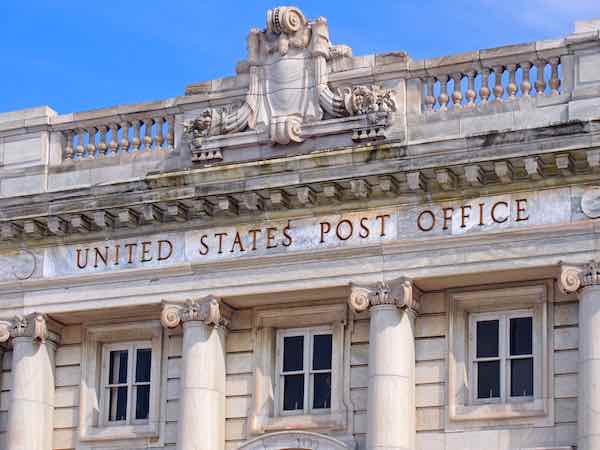The Postal Service expanded its massive financial losses in the third quarter of the current fiscal year, posting a net loss of $2.1 billion, $573 million more than the same quarter last year. Total revenue for the quarter was $16.7 billion.
Revenue from First-Class Mail and Marketing Mail decreased $422 million and $150 million, respectively, over the prior year quarter, due largely to lower volumes. Letter mail volumes declined by approximately 1.4 billion pieces; however, package volumes grew by 133 million pieces continuing a multi-year trend of declining letter mail volumes and increasing package volume.
The Postal Service also said that higher transpiration costs contributed to the greater losses this year over last year.
Expenses for retiree health benefits and workers compensation declined by $869 million and $1.0 billion, respectively, but were partially offset by $1.2 billion in higher retirement expenses largely driven by changes in Office of Personnel Management actuarial assumptions and interest rates.
A Future Taxpayer Bailout?
The Postal Service also warned that it will likely default on $6.9 billion in future retiree health benefits for the fifth year in a row. It owes $33.9 billion in unfunded retiree health obligations from unpaid dues from 2012 through 2016 and has more than $120 billion in unfunded liabilities, mainly for retiree health and pension benefits, according to a Government Accountability Office report.
GAO said in the same report that if Congress continues to expect the Postal Service to pay for the same level of benefits for its retired employees, it ultimately puts American taxpayers at risk of needing to bail out the organization.
“Large unfunded liabilities for postal retiree health and pension benefits— which were $78.9 billion at the end of fiscal year 2015—may ultimately place taxpayers, USPS employees, retirees and their beneficiaries, and USPS itself at risk,” wrote GAO. “If Congress wants these benefits to be maintained at current levels, funding from the U.S. Treasury, and hence the taxpayer, would be needed to continue the benefit levels. Alternatively, unfunded benefits could lead to pressure for reductions in benefits or in pay. Thus, the timely funding of benefits protects USPS employees, retirees, beneficiaries, taxpayers, and the USPS enterprise.”
A “Solvable” Problem
Postmaster General Megan J. Brennan continues to push Congress for assistance in fixing what she says is a “solvable” problem.
“The growth in our lower-margin package business is not sufficient to make up for the accelerating mail volume declines,” she said in a statement. “Our financial situation is serious, but solvable. The continuation of aggressive management actions, and legislative and regulatory reform, will return us to financial stability and enable the Postal Service to maintain the long-term affordability of mail, invest in America’s mailing and shipping industry, and best serve the American public.”
The Postal Service said that it is lobbying for advancement of the Postal Service Reform Act of 2017. The legislation would make a number of changes to address health benefits of current and retired Postal workers.
Higher Stamp Prices?
The Associated Press reported this week that the Postal Service is betting on raising stamp prices to solve some of its financial problems. The Postal Regulatory Commission appears likely to allow the Postal Service to increase stamp prices beyond the rate of inflation, the biggest change in price structure in about 50 years. A final decision is expected next month.



